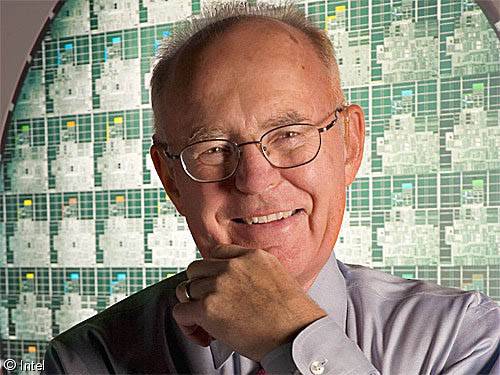Intel forecast - the transition to 5-nm technology will allow Gordon Moore's law to hold on for at least another decade

Original source : http://dvice.com/archives/2012/2012/intel-5nm-proce.php
In 1965, Gordon Moore, one of the founders of Intel, predicted that the number of transistors on microprocessor chips would double every two years, and this forecast affected the next ten years. But more than fifty years have passed, and Gordon Moore's law is still true. And, according to the plans and forecasts of specialists from Intel, will remain true for at least another decade.
')
Currently, it is possible to purchase microprocessors manufactured using 22 nm technology. Transistors, 22 nm in size, are as tiny as the rhinovirus, they are much smaller than 32 nm transistors, which are transistors of the previous generation. But now, Intel is starting to talk about its 10-year plans, which include reducing the size of a transistor to 5 nm.
The next step for the 22nm technology will be the 14nm technology, and the first processors manufactured using this technology will have to appear next year. Processors with transistors at 10 nm should “get on the big foot” in 2015, and then come the turn of 7 nm and 5 nm technology. During all this time, the cost of manufacturing each transistor will have to be reduced by at least 10 times, and the efficiency and speed of new computing systems is difficult to predict even now.
Intel representatives are not reporting exact dates in their plans, which they talk about as if they are 100% sure that they will be able to make new tiny transistors and, most importantly, make them work as they should.
According to Intel's senior research associate, Mark Bohr, “Technological“ bins ”companies are full of research, the implementation dates of which stretch for dozens of years ahead, going through 10, 7 and 5 nm technologies. Currently, we already have workable solutions at 10 nm, and I am sure that such solutions will appear in the near future for both 7 and 5 nm transistors. ”
These new solutions, mentioned by Marc Bor, may be something different from true silicon-based technologies. This may be the use of graphene or something completely new and exotic, but knowing the whole history of Intel, it is safe to assume that Intel will make all this happen without fail, because this is the law, the law of Gordon Moore.
Source: https://habr.com/ru/post/151765/
All Articles